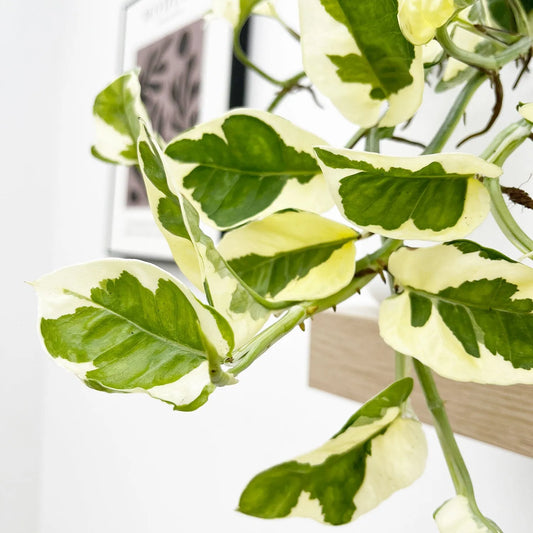Beginner's guide to Fruit bushes
Fruit bushes are an excellent addition to any garden, offering not only a bountiful harvest of delicious, home-grown fruits but also a beautiful display of foliage and blooms. These versatile plants can thrive in a variety of garden settings, from compact urban spaces to sprawling rural landscapes. In this detailed guide, we will delve into the world of fruit bushes, discussing the various types available, how to choose the right ones for your garden, planting techniques, and essential care tips to ensure a productive and visually appealing fruit garden for years to come.
- The Bountiful World of Fruit Bushes: Types and Varieties
Fruit bushes can be classified into several categories, based on their fruit type, growth habit, and climate preferences. Some popular categories and examples include:
a. Berry Bushes: These fruit bushes produce small, fleshy fruits, often with multiple seeds. Examples include blueberries (Vaccinium spp.), raspberries (Rubus idaeus), blackberries (Rubus spp.), and currants (Ribes spp.).
b. Stone Fruits: These bushes produce fruits with a large, hard pit surrounded by juicy flesh. Examples include dwarf peach (Prunus persica), nectarine (Prunus persica var. nucipersica), and cherry (Prunus spp.) varieties.
c. Nut Bushes: Nut bushes produce edible seeds encased in a hard shell. Examples include hazelnuts (Corylus spp.) and dwarf almond (Prunus dulcis) varieties.
d. Tropical Fruits: These fruit bushes are native to tropical regions and require warm temperatures to thrive. Examples include pineapple guava (Acca sellowiana) and Surinam cherry (Eugenia uniflora).
- Choosing the Right Fruit Bushes for Your Garden
When selecting fruit bushes for your garden, consider the following factors:
a. Climate and Hardiness Zone: Choose fruit bushes that are well-suited to your local climate and hardiness zone, ensuring they can withstand the typical temperature range in your region.
b. Space Requirements: Consider the mature size of each fruit bush and select varieties that will fit comfortably in your available garden space. Keep in mind the need for adequate air circulation and sunlight exposure for healthy growth and fruit production.
c. Pollination Requirements: Some fruit bushes require cross-pollination with another compatible variety to set fruit, while others are self-pollinating. Research the pollination requirements of each variety and plan accordingly.
d. Disease Resistance: Opt for fruit bush varieties with resistance to common pests and diseases in your area, reducing the need for chemical treatments and ensuring a healthier harvest.
e. Harvest Time: Select fruit bushes with different harvest times to enjoy a continuous supply of fresh fruits throughout the growing season.
- Planting Techniques for Fruit Bush Success
a. Site Selection: Choose a planting site with well-draining soil and ample sunlight exposure (at least 6-8 hours per day) for optimal fruit production. Additionally, ensure there is adequate space between plants for air circulation and future growth.
b. Soil Preparation: Amend the planting area with organic matter, such as compost or well-rotted manure, to improve soil fertility and structure. Perform a soil test to determine nutrient levels and pH, adjusting as needed based on the specific requirements of your chosen fruit bushes.
c. Planting: Dig a hole twice as wide and just as deep as the root ball of your fruit bush. Gently loosen the roots and place the bush in the hole, ensuring the root collar is level with the soil surface. Fill the hole with soil, firming it gently around the roots, and water thoroughly to settle the soil.
d. Mulching: Apply a layer of organic mulch, such as wood chips, straw, or pine needles, around the base of the fruit bush, leaving a gap around the stem to prevent rot. Mulching helps conserve moisture, suppress weeds, and regulate soil temperature.
- Essential Care Tips for Fruit Bushes
a. Watering: Fruit bushes require consistent moisture, especially during the establishment period and fruit development. Water regularly, providing deep, infrequent soakings to encourage deep root growth. Avoid overhead watering, as wet foliage can promote disease.
b. Fertilizing: Apply a balanced, slow-release fertilizer in early spring, following package instructions for application rates and frequency. Avoid over-fertilizing, as excessive nitrogen can lead to excessive foliage growth at the expense of fruit production.
c. Pruning: Prune fruit bushes annually during their dormant season, typically in late winter or early spring. Remove dead, diseased, or damaged branches, and thin out crowded growth to improve air circulation and sunlight penetration. Follow species-specific pruning guidelines to promote fruiting and maintain a healthy growth habit.
d. Pest and Disease Management: Inspect your fruit bushes regularly for signs of pests or diseases, such as aphids, scale insects, or fungal infections. Address any issues promptly, using organic or chemical treatments as appropriate and following label instructions.
e. Harvesting: Harvest fruits when they reach their peak ripeness, typically indicated by a change in color, texture, and ease of detachment from the bush. Regular harvesting encourages continued fruit production and prevents overloading of the branches.
Fruit bushes offer an abundance of benefits, from a bountiful harvest of home-grown fruits to beautiful foliage and blossoms that add visual interest to your garden. By selecting the right fruit bushes, planting them properly, and providing essential care, you can create a thriving and productive fruit garden to enjoy for years to come. This detailed guide has provided you with the knowledge and tools needed to successfully incorporate fruit bushes into your garden, transforming your outdoor space into a fruitful delight.











Leave a comment
Please note, comments need to be approved before they are published.